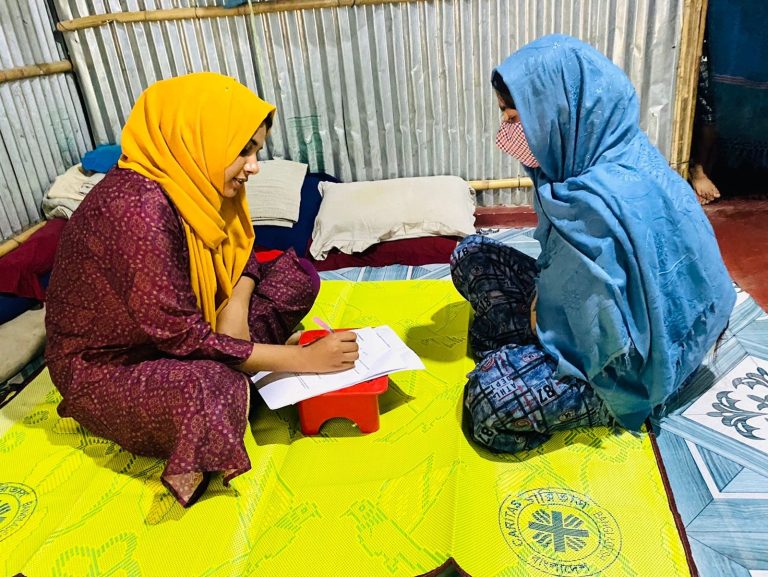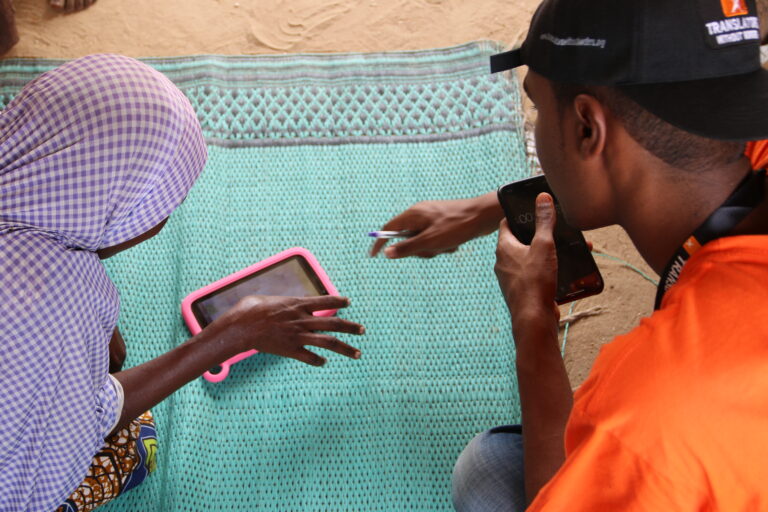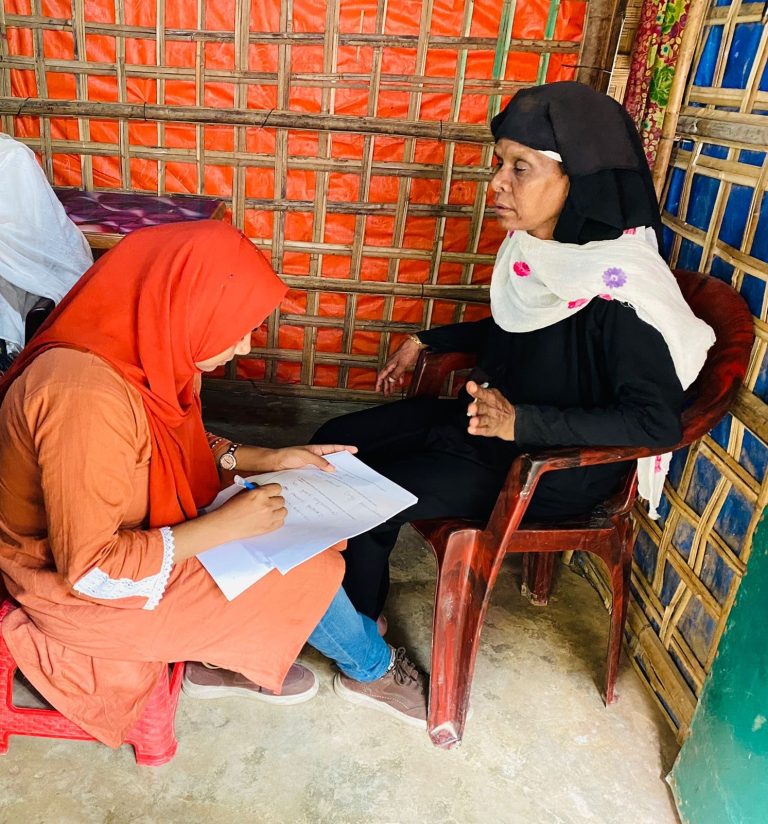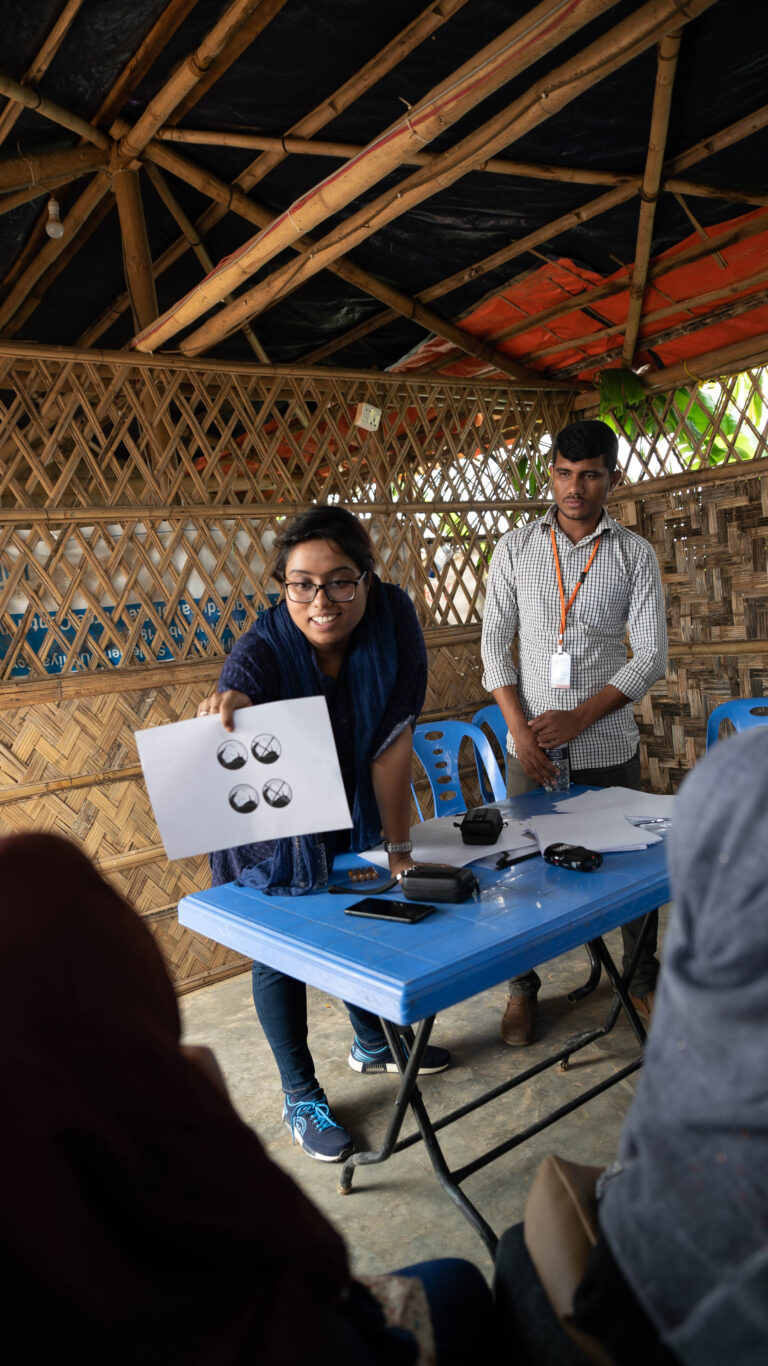Health care for all means leaving no language behind
Inclusive health information solutions must work for everyone
Good health care and well-being are rights for all, but information and services are not currently accessible to all language speakers.
CLEAR stands for community, language, engagement, accountability, and reach. With the TWB Community of over 100,000 language volunteers, CLEAR Tech’s AI-driven language solutions, and CLEAR Insights’ research and partnerships, we’re set to change the way the world communicates. We’re making critical health care information more accessible. Join our call to speak up for language inclusion in 2024 – and read on to learn why it matters.
Language exclusion affects people’s lives, well-being, and development because it reinforces existing social, political, and economic inequalities. Four billion people who speak a non-colonial language are dangerously underrepresented, locked out of vital conversations that affect their health. In real terms, this puts people at risk. Like when they can’t access potentially life-saving information about their health care or well-being.
The stark truth is that those most disadvantaged or excluded by language include people at risk of poverty, women and girls, people with disabilities, older adults, and minorities. Globally, four and a half billion people were not fully covered by essential health services in 2021, and 25 million children missed out on important immunizations. With inclusive solutions, we can ensure we leave no one behind – whatever language they speak.

“At CLEAR Global, we help people to get lifesaving health care information and be heard, whatever language they speak.”
Inequalities are widespread: why it’s time to focus on inclusion
Language is critical for achieving the Sustainable Development Goals, specifically SDG 3, universal health coverage, and access to safe and affordable medicines and vaccines for all. 75 years ago, the Universal Declaration of Human Rights established everyone’s equal, fundamental rights – including the right to get and share information regardless of race, color, sex, or language. The rights are translated into over 500 languages, including Rohingya, for example. Yet the reality is far from equal, and the inequalities impact people’s health and well-being.
“If everybody was concerned about communication and tried to improve it, the entire health sector would improve with better services.”
- Doctor, Kutupalong refugee camp, Bangladesh Tweet
Nearly a million Rohingya speakers live in overpopulated refugee camps in Bangladesh. Our research shows their needs often remain unmet due to inadequate resources and staff to support communication.
Language challenges, cultural differences, and lower levels of health literacy among the Rohingya community can cause confusion, stress, and frustration for patients. These barriers present even more serious challenges and dangers when doctors can’t understand their patients, patients don’t understand medicine dosage instructions, and people who speak sign language go without an interpreter.
By supporting inclusive language solutions, we can help shift power structures. Why? So that people who already faced trauma and humanitarian crises can feel confident and respected in seeking health care. Inequalities persist worldwide, and exclusion disproportionately impacts the health and well-being of marginalized populations worldwide. People need accurate information via communications channels they trust:
- Disinformation and misinformation worsen disease outbreaks and threaten public health.
- Language barriers can be a major cause of disinformation. Comprehension of health information decreases by 78% when it is not available in someone’s native language.
- When the pandemic began, dangerous misinformation including false cures spread quickly through refugee camps across the world, increasing mistrust and preventing many from getting professional treatment.
- Misinformation and disinformation spread in 25 different languages across at least 87 countries, including the United States, leading to violence, deaths, and injuries.
- In Bangladesh, Rohingya people reported negative and neutral experiences and made fewer visits to health centers. A mobile ban and information shortage made it difficult for aid workers to spread safe advice.
- In Nigeria, people refused the COVID-19 vaccine because of frightening rumors.
When we focus on language inclusion, we can make sustainable development a reality. We can empower people to know and uphold their rights, and help everyone stay safe, heard, and well. If we include all language speakers in conversations that affect their health, we can make universal health care a reality.
“To bridge this gap and ensure equitable health care provision, addressing disparities is critical.”
- UN Tweet
Good health care and well-being are rights for all, but they’re not accessible to all language speakers.
Language inclusion means recognizing and respecting linguistic diversity and promoting multilingualism in all areas. It means ensuring people can get vital information and be heard in their language. CLEAR Global provides lifesaving information during health crises to help better manage disease outbreaks and deliver verified information. Our research, advocacy, data, and tech teams are helping make it possible with policies, practices, and technologies that respect and listen to diverse, marginalized voices. We research to understand people’s information and communication needs. Then we develop solutions and collaborate with verified, trusted responders to distribute health information in multilingual formats that work for affected people.
Our communication tools and AI language solutions empower people in local and global health emergencies to access information and services like health care. For linguistically diverse communities severely affected by public health crises, conflict, and disaster, we create accessible, trustworthy channels for people to make their voices heard. We believe that everyone, everywhere deserves access to critical healthcare they can understand.
Language research and innovative technology help
When we invest in language inclusion, we can make meaningful change. Inclusive, human-centered multilingual solutions are the key to understanding, and empowering people to make informed decisions and access critical health care information. That’s why we’re giving people the valuable opportunity to ask questions and get answers in their language. Inclusive UX research and design helps us understand target audiences’ needs and improve user experience. We work with organizations such as IOM, Oxfam, and WFP, in addition to local experts and grassroots organizations, to create innovative lifelines:
- Our language dataset is invaluable for ensuring responders and communicators know what languages people understand.
- Language research listens to communities’ experiences and perspectives to provide recommendations for humanitarians on engaging and communicating more effectively with the community on health issues and services.
- CLEAR Global’s glossary apps improve communication between aid workers and affected communities in some of the world’s most linguistically diverse and challenging contexts.
- The Bangladesh glossary is in English, Bangla, Burmese, Chittagonian, and Rohingya, with 300 terms on humanitarian aid, protection, return and relocation, health, MHPSS, gender, and more.
- The COVID-19 glossary contains multilingual, plain-language terms to assist field workers and interpreters in engaging with communities and raising awareness.
- Our conversational AI chatbots support access to information during health outbreaks, using natural language understanding to create the look and feel of a real conversation.
- Shehu in Nigeria and Uji in the Democratic Republic of Congo enable people to get accurate answers to their questions on COVID-19 and Ebola in their language.
Making information more accessible for everyone
- Language and communication toolkits help Ukraine responders and people supporting those affected by the Türkiye–Syria earthquakes effectively communicate and provide aid.
- Practical language solutions, pictorial, written, audio, and video translations of key terms support conversations about health, mental health, psycho–social support, safeguarding, and more in languages.
- Sign language video translations and definitions in our PSEA glossary and WFP Community Engagement glossary help responders and affected people communicate about preventing sexual exploitation and abuse, health care, and diseases in various contexts.
- Captioning services, subtitles, and audio transcription support access for the deaf and people living with hearing loss, for example, InterAction’s PSEA It’s Everyone’s Responsibility animation in 13 languages, with localized images and subtitles.
- Audio versions of our glossaries support people with visual impairments and people who have difficulty engaging with printed materials.
- Plain language – makes reading health information easier for everyone regardless of their education, literacy level, or professional status. We offer training, editing services, and guidelines to help audiences find, understand, and use content.
- Voice-powered information devices enable people in low-literacy and low-connectivity contexts to ask questions and receive audio and visual responses in their language, e.g., this Hindi project in India.
These vital language solutions help marginalized and vulnerable people, parents seeking medical aid for their poorly children, and the doctors trying to treat them.

Making meaningful change together
When humanitarian programs adopt inclusive language practices and locally relevant communications solutions, we can better prepare for and respond to global health crises.
In Kenya, we helped prioritize translations into Swahili to guarantee better information access and fight misinformation across the country. In Nigeria, our multilingual conversational chatbot with verified COVID-19 and Ebola information earned a 90.1% trust rate. In Bangladesh, our Rohingya language guidelines, and resources are helping spread accurate information and gain people’s trust in the system, so they feel comfortable seeking health support and treatment.
We’re seeing change around the world:
When humanitarian programs adopt inclusive language practices and locally relevant communications solutions, we can better prepare for and respond to global health crises.
In Kenya, we helped prioritize translations into Swahili to guarantee better information access and fight misinformation across the country. In Nigeria, our multilingual conversational chatbot with verified COVID-19 and Ebola information earned a 90.1% trust rate. In Bangladesh, our Rohingya language guidelines, and resources are helping spread accurate information and gain people’s trust in the system, so they feel comfortable seeking health support and treatment.
"While in the early years, there were huge gaps between patients and providers, with commonplace misunderstanding and mistrust, in recent years awareness sessions and outreach activities largely improved mutual understanding.”
– Medical assistant, Camp 25, Bangladesh Tweet

“In early 2018 we faced challenges communicating with patients due to the language barrier. Pregnant women would assume that their baby would die if delivered at a hospital. Patients would not always take medication as prescribed by the doctor and sometimes take overdoses. Patients were unsure whether medications could help them or not, such as not being willing to take COVID-19 vaccines. However, through our counseling and awareness sessions during our outreach activities, we have improved these misunderstandings. Patients now realize that hospitals are not harmful to them, and the services we provide are meant to improve their health conditions.”
– Medical assistant, Camp 25, Bangladesh Tweet
"We are eager to apply these findings and to get a child-friendly safeguarding awareness-raising package out to the world that is empowering to children, protects them, and enables them to hold us accountable and seek justice when they have been harmed.”
– Mental health care provider, Kutupalong refugee camp, Bangladesh Tweet

"We are eager to apply these findings and to get a child-friendly safeguarding awareness-raising package out to the world that is empowering to children, protects them, and enables them to hold us accountable and seek justice when they have been harmed.”
– Melanie Ewert | Global Safeguarding, Senior Advisor | World Vision International Tweet
"This is of great value for Ukrainian local organizations, as the materials are available in the national language spoken by everyone in Ukraine.”
– Dmytro Skopienkov | Safeguarding Officer - Plan International Ukraine Tweet

“They helped us truly understand the challenges populations face, including details about their living conditions and health risks. At the same time, it helps us adapt our services to the local culture, and that includes being delivered in the local language.”
– San Bundgaard, IRC Tweet
Our critical research, advocacy, and data inform the humanitarian community of communication and information challenges, leading to changed humanitarian strategies. Extensive capacity strengthening and training on inclusive communication practices help global and local responders advocate for and meet people’s needs. It helps organizations representing and working with marginalized and vulnerable communities to promote effective two-way communication. Together, we can empower people to get vital health information, stay safe, and make their voices heard.
Language inclusion is essential for achieving the sustainable development goals and creating a more inclusive and equitable world. To achieve the SDGs, health information must be in the right language and format. This means ensuring health care providers can effectively communicate with patients, and that people can get answers to their questions easily. By promoting language inclusion in health care, we will make significant strides towards leaving no one behind.
– Written by Danielle Moore, Communications and Engagement Officer, CLEAR Global
Get involved – Speak up for language inclusion
You can make a difference
- A $25 donation can translate 250 words of key safeguarding, health, or climate change messages, making them accessible to people in new emergency contexts.
- A $1,000 donation can adapt existing resources like pictorials to a new context in multiple languages, helping people understand vital information.
- Learn more about the impact you can make.
Sign up for our newsletter to stay updated
Read more on the CLEAR Global blog: